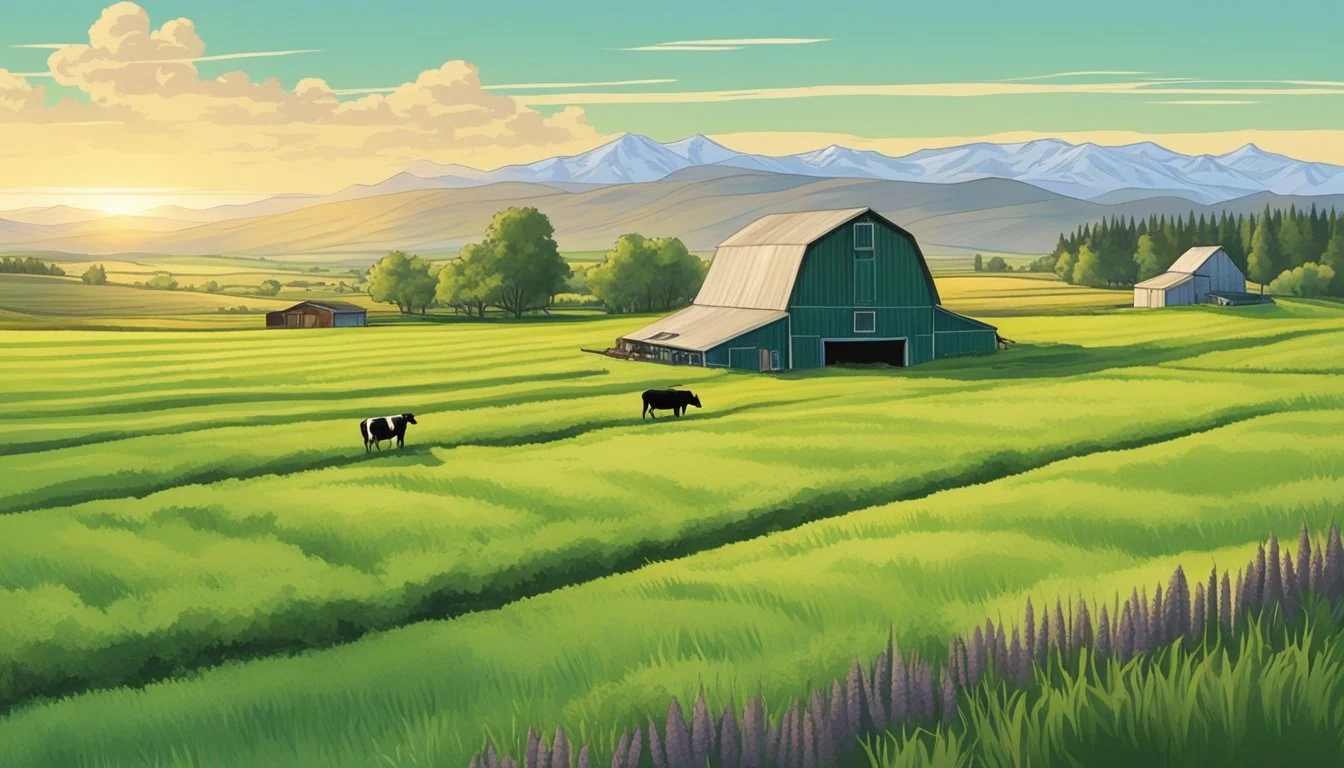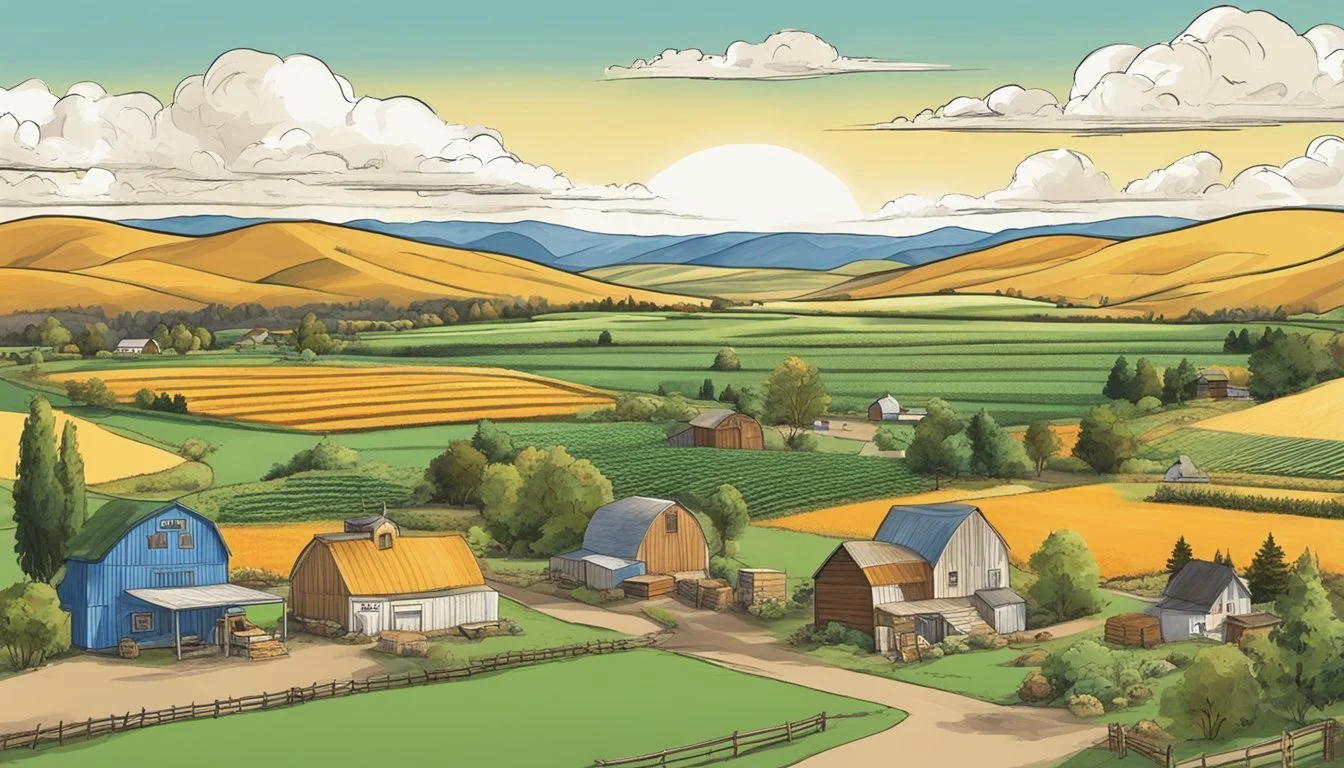Right to Farm Law in Idaho
Understanding Agricultural Protections
The Right to Farm Law in Idaho is designed to protect and promote agricultural operations by providing a legal shield against certain nuisance lawsuits. This statutory framework recognizes the importance of farming to the state's economy and way of life, and seeks to preserve agricultural activities by precluding the legal challenges that could arise from the standard operations of farms. The law acknowledges that farming, by its nature, can create noise, odors, dust, and other conditions that might be construed as a nuisance under different circumstances.
Under Idaho's Right to Farm statutes, an agricultural operation is not considered a nuisance if it adheres to generally accepted agricultural practices and has been in operation for more than one year when the complaint is filed. These provisions are crucial for farmers as they underscore a commitment to longstanding agricultural practices amidst increasing urban sprawl. The statute intends to strike a balance between the needs of rural agricultural communities and the interests of neighboring properties.
The law therefore, serves as a cornerstone for Idaho agriculture, ensuring that the state's farms can operate without the undue burden of litigation related to issues such as noise or odor that are typical in agricultural settings. It is a clear message of the state's intent to support and sustain its vital agricultural sector for the long term.
Historical Context
In response to the tension between agricultural practices and urban expansion, states across the U.S. began to establish Right to Farm laws. These laws sought to protect farming operations from nuisance lawsuits and urban pressures.
Origins of Right to Farm Laws
Right to Farm (RTF) laws arose in the United States during the latter half of the 20th century. They were developed as a legal shield for farmers and agricultural producers facing nuisance lawsuits as residential development expanded into traditional farming areas. These lawsuits could arise from new residents who were unaccustomed to the sights, sounds, and smells associated with agricultural production. The main intent was to protect farmers from such suits, provided they were conducting standard farming operations.
Idaho's Adoption
In 1981, Idaho formally recognized the tensions between burgeoning urban development and agricultural practices with its own Right to Farm legislation. The Idaho State Legislature identified that urbanization was leading to conflicts with long-standing agricultural activities. Consequently, they enacted the RTF law to affirm that farming is a vital part of the state's heritage and economy. They intended the law to safeguard existing farming operations from nuisance suits, thereby discouraging the premature rezoning or sale of farmland for non-agricultural uses. Idaho's law underlines the state's stance that agriculture is a protected and encouraged activity, essential to both the state's identity and its economy.
Fundamental Provisions
The Right to Farm Law in Idaho enshrines the legality and protection of agricultural practices within the state's jurisdiction, ensuring that agricultural operations are not deemed a nuisance under normal circumstances and setting clear definitions for what constitutes such operations.
Definition of Agricultural Operations
Idaho Code defines "Agricultural Operation" as an enterprise at a fixed location that is engaged in the act of farming. This includes, but is not limited to, the production of crops, fruits, vegetables, ornamental and flowering plants, dairy, livestock, poultry, and all forms of aquaculture. An agricultural facility may comprise land, buildings, ponds, machinery, or any equipment utilized for farming purposes. The nature of an operation being agricultural is vital as it determines the applicability of the Right to Farm protections.
Land: The area utilized for agricultural activity.
Agricultural Land: Specifically designated land for agricultural use to avoid ambiguity.
Nuisance Protection
Under this law, agricultural facilities or operations, including their expansions, are protected from nuisance lawsuits. This protection is central to the Right to Farm Law, as it prevents agricultural operations from being sued on the grounds that they are a nuisance, provided they conduct standard agricultural practices.
Property: Refers to any physical or tangible entity under the ownership of the agricultural operation.
Nuisance: A legal term that typically refers to the interference with the enjoyment of property or the rights of an individual, where agricultural operations are specifically shielded from such claims.
The law inherently recognizes the importance of agriculture to the state of Idaho and aims to mitigate the potential conflict between agricultural practices and urban development. As such, the Right to Farm Law functions as a cornerstone for Idaho's agricultural industry, promoting stability and certainty for farmers and their operations.
Operational Scope
The Right to Farm Law in Idaho delineates specific protections for agricultural operations, shielding them from nuisance lawsuits due to changes in local conditions. Such statutes are instrumental in maintaining the viability of agricultural production.
Protected Activities
Under Idaho's Right to Farm laws, numerous activities intrinsic to agriculture receive protection:
Noise: Ordinarily occurring noises from equipment and machinery are safeguarded.
Dust and Odor: Emissions naturally resulting from farming practices are included.
Machinery: The utilization of farming machinery is defended against nuisance claims.
Production and Agricultural Products: Processes involved in generating agricultural products receive shielding.
Chemicals: The lawful use of chemicals in farming processes is protected.
Growing, Raising, and Feeding: These fundamental agricultural activities are included, as are practices related to the raising and feeding of animals.
Limitations and Responsibilities
While the law provides extensive protections, it also imposes certain limitations and responsibilities on agricultural operations:
Nuisance: Agricultural facilities are not deemed a nuisance if they result from changing non-agricultural activities around them, provided they have existed prior to such changes.
Adherence to Legal Standards: Farms must comply with applicable environmental, agricultural, and health standards.
Legitimate Complaints: Operations that fall outside the scope of "normal agricultural practice" or that fail to follow state laws may not receive protection and might be subject to nuisance actions.
In summary, Idaho's Right to Farm Law provides significant coverage for everyday agricultural activities while reinforcing the need for responsible farming practices.
Legal Framework
The legal framework of Idaho's Right to Farm Law is designed to protect agricultural operations from nuisance lawsuits, balancing the needs of agricultural industry stability with the concerns of neighboring properties.
Nuisance Lawsuits and Defenses
Under Idaho's Right to Farm statutes, particularly Idaho Code §§ 22-4502 to 22-4504, an agricultural operation or facility is not to be deemed a nuisance, under specific circumstances, if it adheres to generally accepted agricultural practices. This statutory shield comes into play primarily in urbanizing areas where farming activities are often at risk of being labeled as nuisances due to the encroachment of non-farming neighbors.
The defense against nuisance lawsuits relies heavily on the operation being established prior to any surrounding non-agricultural developments. These protections are expressly designed to ensure that agricultural operations can continue without the threat of lawsuits based on changes in land use in the surrounding area.
Role of Local Ordinances
Local laws and regulations are expected to align with Idaho's Right to Farm Law. While local ordinances can address safety and regulations for the welfare of the community, they should not contradict state protection afforded to farms. Essentially, while local entities can enact ordinances relevant to their jurisdictions, these must not undermine the state law's intent, which is to safeguard agricultural operations from being considered a nuisance as long as they operate within the bounds of accepted norms and practices.
Impact on Communities
Idaho's Right to Farm laws significantly influence the interactions between agricultural practices and the advancing wave of development from urban areas into traditional farming communities.
Right to Farm and Urbanization
As residential zones expand towards farming territories, the Right to Farm Act serves as a protective shield for farmers, affirming that agriculture is a natural and permitted use of land throughout Idaho. This legislative support ensures that farms can continue operating amidst growing cities, which might otherwise pressure them to sell their land for development. While this helps preserve agricultural operations, it can lead to tensions with new nearby residents, as typical farming activities may produce odors, noise, and light that can affect the living conditions in residential areas.
Public Health Considerations
The Right to Farm law in Idaho is designed to balance the needs of agriculture with public health concerns. However, the operation of farms close to residential zones raises issues about public health, due to factors like odors and the use of agricultural chemicals, which can have complex impacts on residential communities. The legislature maintains that farming practices which comply with all relevant laws and are conducted reasonably should not be considered a nuisance, with the aim of allowing agriculture to coexist with urbanization without compromising the health of the public.
Amendments and Revisions
Idaho has historically revised its Right to Farm Law to reinforce the security of agricultural operations, addressing shifts in farming practices and expanding protections against nuisance lawsuits.
Expansion of Protections
In 1994, Idaho's Right to Farm Act (RTF) underwent significant changes with an amendment that curtailed the authority of local bodies to regulate agricultural operations. Specifically, cities, counties, and other political subdivisions were largely stripped of their power to impose conditions on agricultural practices that were considered generally accepted. This expansion has ensured that farming in Idaho, including activities such as cattle raising and crop production, continues to thrive with reduced interference from local permits and regulations.
Title 22, Chapter 45 of the Idaho State Legislature codifies these protections.
Agribusinesses are safeguarded under these provisions to operate without undue regulatory burdens.
Responses to Changing Practices
The Right to Farm Act has been responsive to the evolution of farming and agricultural operation practices. Revisions take into account:
New technological advancements in agriculture.
Changes in farmland use and the scale of operations.
The statute acknowledges the dynamic nature of the agricultural industry and the need for legislation to adapt accordingly. This ensures the continuation of Idaho's commitment to protect its agricultural resources and the livelihoods of those who work the land.
Case Studies and Precedents
The interpretation of Idaho's Right-to-Farm Law has been shaped through various legal challenges. These cases establish precedents and have influenced interpretations and applications of agricultural law in Idaho and beyond.
Notable Idaho Cases
Smith v. Currie (2001): This case reaffirmed that agricultural practices, which are consistent with good agricultural practice and established prior to surrounding non-agricultural activities, are protected by Idaho's Right-to-Farm Law.
Johnson v. Givens (2007): A lawsuit centered around odors and noise from a dairy operation, which resulted in Idaho examining the scope of its Right-to-Farm laws and the protections it affords to farmers against nuisance lawsuits.
Influence on Other States
Inspiration for Legislation: Idaho's implementation of its Right-to-Farm laws has served as a precedent for other states considering similar legislative measures, with particular focus on safeguarding agricultural activities from nuisance lawsuits.
Evolution of Law: The development and subsequent amendments to Idaho's Right-to-Farm Law over the years, including its reinforcement or repeal of certain provisions, have illustrated the dynamic nature of agricultural law, influencing how other states draft or revise their own agricultural statutes.
Future of Right to Farm in Idaho
The evolution of Idaho's Right to Farm (RTF) laws is poised to shape the future of agriculture in the state, with ongoing discussions about potential reforms and the resolution of challenges fueled by urban sprawl.
Challenges and Debates
In Idaho, the protection of agricultural operations against nuisance lawsuits has been a cornerstone of RTF laws. As urbanization expands, agricultural facilities face increasing conflicts with residential and commercial development. This interface between rural and urban areas creates tension, with local residents sometimes challenging agricultural practices they view as nuisances. The debate intensifies around the balance between supporting farmers and addressing the concerns of new urban populations.
Nuisance Lawsuits: Farmers seek to maintain their ability to operate without the threat of legal actions classifying their practices as nuisances.
Urbanization Pressures: As cities expand, the conversion of agricultural lands to urban uses escalates, prompting discussions about farmland protection.
Potential Reforms
The trajectory of Idaho's RTF laws may include reforms that further clarify and strengthen the position of agriculture and horticulture. Policymakers may consider actions that ensure the feasibility of farming in the face of urban growth.
Statutory Amendments: Modifications to statutes that clearly define acceptable agricultural practices and limit local governments' powers to regulate.
Agricultural Zones: Establishment of protected zones to safeguard agricultural operations from being deemed nuisances.
Bold steps in policy reform can continue to underscore Idaho's commitment to preserving its agricultural heritage while addressing the challenges of an evolving landscape.










